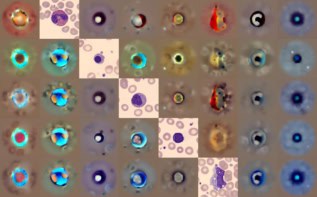
Researchers from Goethe University, Germany, have used functional MRI (fMRI) measurements of the blood oxygen level dependent (BOLD) signal to investigate how activity in the visual cortex changes depending upon the time of day (Nature Communications 10.1038/s41467-018-03660-8).
Using resting-state fMRI, they discovered a drop in the standard deviation (SD) of the BOLD signal (producing a higher signal-to-noise ratio) at twilight, and between sunset and dusk. These results imply that the visual cortex endogenously becomes better at visual detection in low-light regimes. The authors suggest an anticipatory mechanism whereby visual detection improves according to the time of day.
Resting state and task scans
The researchers recorded resting state fMRI scans of 14 healthy males at 8 am, 11 am, 2 pm, 5 pm and 8 pm for two days. Nine of the participants also performed a visual detection task where they had to press a button once they saw an orange crosshair flashing for 500 ms on a screen.
BOLD SD dropped at 8 am and 8 pm, in visual, auditory and somatosensory cortices, as measured from the resting-state fMRI scan. The drop was between 17.9-25.8% compared with the SD at 2 pm, and occurred in the absence of any task, implying an endogenous modulation.
Participants performed the visual detection task during the same scanning session (at the same times of day as the resting state scan). While reaction time was consistent throughout the day, the number of times that a participant missed a stimulus (omission errors) followed the same daily pattern as the resting-state BOLD SD. This consistency between the task and resting scan shows a relationship between perception and behaviour.
Additionally, the researchers measured the task-based BOLD SD from the visual detection scans that showed a drop in SD at 8 am and 8 pm. Overall, the omission errors correlated positively with the SD in the visual cortex during rest and the visual detection task.

Time of day modulation
The team concluded that there is a positive correlation between reduced visual cortex BOLD SD during twilight and improved visual detection. The important finding is that this occurs during resting state, indicating an endogenous, time-of-day dependency of visual cortex BOLD SD, perhaps to anticipate low-light regimes or close-to-threshold visual perception. Interestingly, the drop in BOLD SD was also found in somatosensory and auditory cortices, indicating a multisensory component to this phenomenon.
This work explores the relationship between the human diurnal cycle and BOLD signals, suggesting a likely endogenous increase in signal-to-noise ratio at times when our eyesight is hampered. This function was, perhaps, a crucial factor for survival prior to the introduction of electricity.



